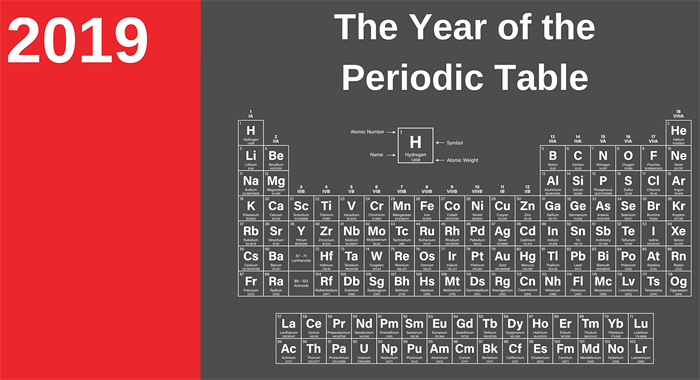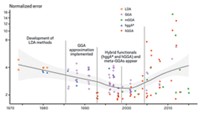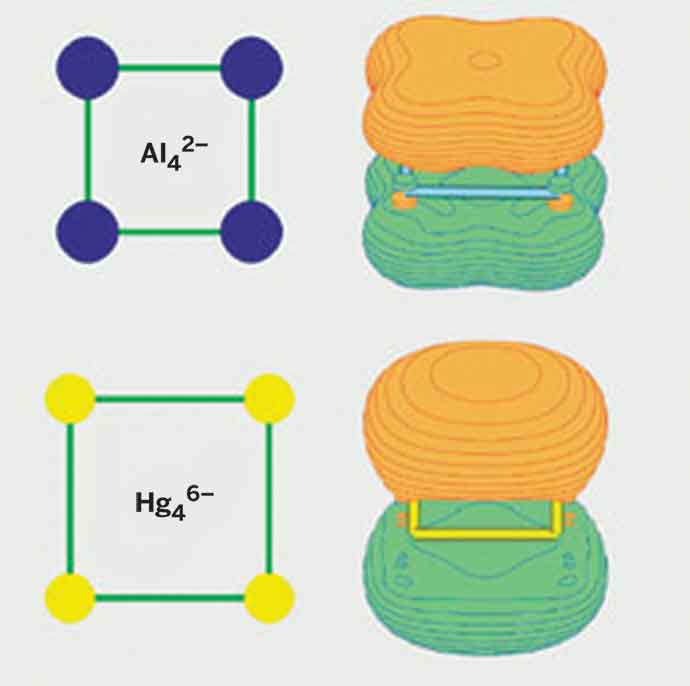Advertisement
Grab your lab coat. Let's get started
Welcome!
Welcome!
Create an account below to get 6 C&EN articles per month, receive newsletters and more - all free.
It seems this is your first time logging in online. Please enter the following information to continue.
As an ACS member you automatically get access to this site. All we need is few more details to create your reading experience.
Not you? Sign in with a different account.
Not you? Sign in with a different account.
ERROR 1
ERROR 1
ERROR 2
ERROR 2
ERROR 2
ERROR 2
ERROR 2
Password and Confirm password must match.
If you have an ACS member number, please enter it here so we can link this account to your membership. (optional)
ERROR 2
ACS values your privacy. By submitting your information, you are gaining access to C&EN and subscribing to our weekly newsletter. We use the information you provide to make your reading experience better, and we will never sell your data to third party members.
Physical Chemistry
History of Chemistry
Chemical Bonding's Venerable Past
by Stephen K. Ritter
January 29, 2007
| A version of this story appeared in
Volume 85, Issue 5

The concept of the chemical bond has been around since the days when chemistry still was considered magic, and it continued to be a point of interest in the 17th century when chemistry was evolving into a scientific discipline. But the "electronic structure revolution" leading to the current descriptions of chemical bonding began only 90 years ago, notes chemistry professor Sason Shaik of Hebrew University of Jerusalem, Israel.
It was then that Gilbert N. Lewis of the University of California, Berkeley, published a seminal paper starkly entitled "The Atom and the Molecule" (J. Am. Chem. Soc. 1916, 38, 762). In this paper, Lewis proposed a general theory of chemical bonding based on shared pairs of electrons between atoms.
Shaik recently teamed up with chemistry professor Gernot Frenking of Philipps University, in Marburg, Germany, to produce a special issue of the Journal of Computational Chemistry (JCC) dedicated to chemical bonding in general and to Lewis as the father of chemical bonding. The publication includes nine essays written about Lewis and his impact on chemical bonding, as well as 28 invited papers on the myriad faces of chemical bonding. The full issue is available online at www3.interscience.wiley.com/cgi-bin/jissue/113493174.
In one of the essays, Shaik extols Lewis' work: "The paper is hierarchical and has a tempo that accelerates as the pages progress," Shaik writes. "The concepts are built gradually, initially slowly, with digressions along the way, and then with increased pace toward a converging finale. The increased pace intensifies the impression of a sense of discovery that must have driven Lewis during the act of writing itself."
Adds Shaik: "I feel sorry that we do not write like that anymore, or are inhibited in doing so."
In another essay, science historian Ana Simões of the University of Lisbon, Portugal, compares the legacy of Lewis to an "open work of art" whose structural features can be modified and adjusted to the functions envisioned by its users.
One creative idea stemming from Lewis' chemical bonding model is the use of two dots, like a colon, to represent the electrons in a bond. The pair of dots is "an ingeniously portable symbol for a bond," Shaik notes. Writing electron-dot structures (Lewis structures) enables chemists to reason about the chemical properties of molecules and reaction mechanisms in order to "construct the chemical universe," he says.
Lewis' bonding ideas were later set on firmer ground by a number of chemists and physicists, Shaik points out. For example, Irving Langmuir, a researcher at General Electric, published an influential paper in 1919 that expanded Lewis' concepts (J. Am. Chem. Soc. 1919, 41, 868). One of Langmuir's contributions in the 1919 paper was to introduce the term "octet rule" to describe the ideal number of electrons surrounding a bonded atom in the Lewis model. Another was coining the term "covalent" to describe bonds based on the sharing of electron pairs.
In 1927, Walter H. Heitler and Fritz W. London at the University of Göttingen, Germany, made the connection between chemical bonding and the then-new theory of quantum mechanics, which encompasses the physics that governs the motions of the nuclei and electrons in atoms. After spending some time with Erwin Schr?dinger at the University of Zurich, Switzerland, they reported how Schr?dinger's newly formulated wave equation could be used to calculate the covalent bond energy in H2 from the resonance (mixing) between the hydrogen valence electrons as they exchange positions between the two atoms.
Heitler and London set the stage for Linus C. Pauling of California Institute of Technology to further develop the application of quantum mechanics to chemistry through the valence bond (VB) theory. Pauling's descriptions of bonding outlined in a series of papers in the Journal of the American Chemical Society from the late 1920s into the mid-1930s led to his famous book, "The Nature of the Chemical Bond," first published in 1939. At about the same time, Robert S. Mulliken, while at the University of Chicago and elsewhere; Friedrich Hund at the University of Leipzig, in Germany; and others developed molecular orbital (MO) theory, which is also based on the Lewis model.
VB theory constructs bonds by pairing electrons in the atomic orbitals of pairs of atoms to create suitable energy levels for the shared electron pairs. Molecules are formed by joining several VB structures. The electron-pair bond is considered a combination of the possible covalent and ionic bond components.
In contrast, MO theory considers all the nuclei in a molecule simultaneously, and it mathematically constructs energy levels associated with the molecule as a whole. The electron pairs are distributed in sets of molecular orbitals that can extend over the entire molecule, rather than just between two atoms.
So long as the electrons are fairly localized on individual atoms or between two atoms, the VB and MO pictures of the chemical bond are essentially the same, Shaik points out. Although VB theory can accommodate delocalization of electrons through resonance structures, MO theory has been considered a more direct framework for treating delocalized electrons, such as those in aromatic compounds. VB and MO chemical bonding themes are relatively easy to grasp at the qualitative level, and they are taught in introductory chemistry courses. But at the quantitative level, the mathematical expressions for molecules are daunting enough to keep all but specialists at bay.
Even though most of the researchers who developed chemical bonding theories in the 1920s and '30s worked or studied together at some point, the VB and MO approaches eventually developed into rival schools of thought, Shaik says. VB theory, championed by Pauling and supported by his leading role in crystallography, dominated in the early years.
But by the mid-1950s, MO theory came to the fore because it was more useful for physical organic chemists studying the structure and bonding of carbocations and radicals, as well as stereochemistry. They were able to investigate transition states in reactions and predict and then experimentally observe structures and spectra. In addition, early computational software in the 1970s, such as the Gaussian program, was written for MO theory. The lack of similar software for VB theory effectively promoted the idea that MO theory was "the only legitimate chemical theory of bonding," Shaik notes.
For a time, VB theory fell into disrepute and was nearly abandoned, he says. It remained alive in a few research communities, such as chemical and biochemical reaction dynamics, chemistry professor Donald G. Truhlar of the University of Minnesota, Minneapolis, notes in one of the JCC essays.
Since the 1980s, VB theory has made something of a comeback, although it is still by far a minority view. The rebound is in part because VB models and software are catching up to those associated with MO theory and in part because of the advocacy of Shaik, his collaborators, and others.
Frenking, longtime editor of JCC, points out that numerous bonding methods have been developed in the past decade, which includes models for understanding structures and reactivities that go beyond simple MO models. These advances now "make it possible for scientists to choose among different models to interpret their results," he says.
Beyond the tussle between VB and MO theories, there's a simmering debate about how quantum mechanics shifted the philosophical outlook of chemical bonding. Once quantum mechanics entered the picture with the work of Heitler and London, who were both physicists, many physicists adopted the idea that the chemical bond had become the property of physics and no longer remained in the realm of chemistry.
Although there is some merit to that claim on the theoretical side, many computational chemists have argued that the purely quantum mechanical approach leaves chemical bonding merely as a conceptual construct. It's chemists, they say, who add insight to how the predictive power of VB, MO, and other theories can be used to help guide experiments and explain molecular phenomena. Shaik says that despite the "physical dressing," the chemical bond remains safely within chemical territory.
- The Chemical Bond
- Whether it's sextuple bonds or bonds involving no shared electrons, chemists chase down new modes of bonding.





Join the conversation
Contact the reporter
Submit a Letter to the Editor for publication
Engage with us on Twitter